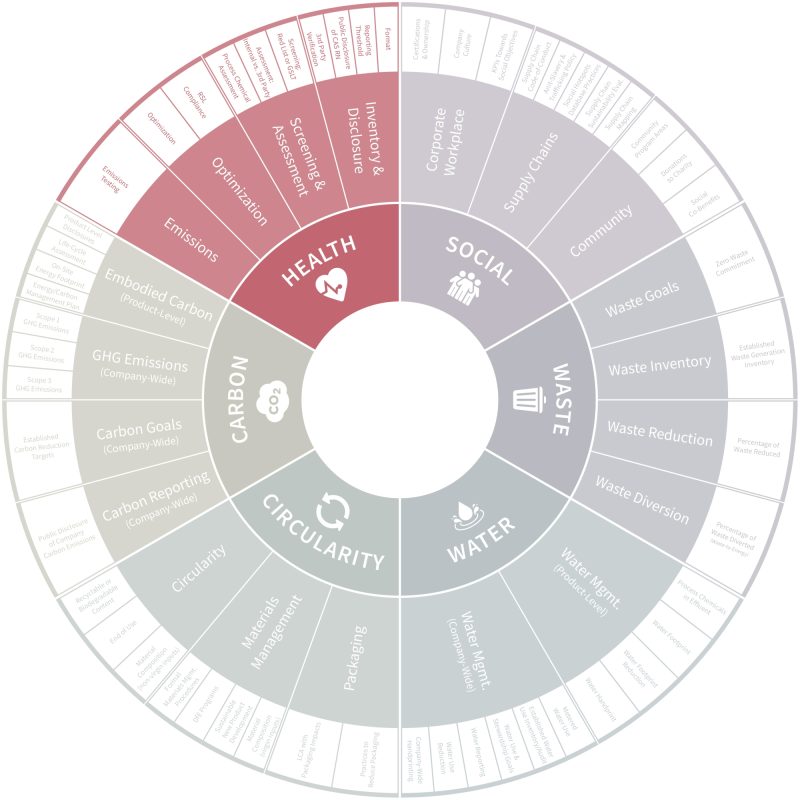HEALTH
A vast majority of building products contain chemicals that can be toxic to human health. These chemicals may seem like they are permanently bound within products, but they can actually release into the air we breathe and spaces we inhabit, eventually finding their way into our bodies. Depending on the types of chemicals and levels of exposure, the resulting health effects may vary, but can include everything from acute irritations and sensitivities to long-term disorders and conditions that may be passed down through generations.
While there is still very little federal regulation over the chemicals in building materials, we have seen tremendous progress in recent years from industry-led initiatives and state-level regulations. Product transparency is becoming more mainstream as manufacturers are voluntarily disclosing product ingredients and health impacts. Designers are stepping up to educate themselves, making more informed decisions and demanding healthier products. And with collaborative efforts from all sides of the industry we are seeing a growing number of products available on the market that avoid toxic chemicals.

DESIGN STRATEGIES








KEY PRODUCT CONSIDERATIONS

Inventory & Disclosure - What’s inside?
Has the manufacturer reported all of the substances contained in the product? Are these ingredients reported in a reliable format that is publicly available and verified to be accurate by a third-party?
Disclosures include: HPDs, EPDs, Declare Labels
Screening & Assessment - Are any substances considered hazardous?
Have the product’s contents been screened against an authoritative Restricted Substances List (RSL), or have individual chemicals been assessed for their potential impacts on human health?
RSLs include: GreenScreen, ILFI’s Red List, GSPI’s Six Classes, P+W’s Prec. List
Optimization
Has the manufacturer removed hazardous substances from the product or shown that the product does not contain any hazardous chemicals found on authoritative Restricted Substances Lists (RSLs)?
Optimizations include: Red List Free, C2C Certified
VOC Content & Emissions
Has the product been tested for Volatile Organic Compound (VOC) emissions and shown to have limited potential for off-gassing hazardous chemicals?
VOC Certifications include: Greenguard, SCS Indoor Advantage
WORDS OF INSPIRATION
Why should we care about healthier materials and why now? Experts in their fields make their case for the urgent adoption of healthier building practices.
FURTHER READING

Also In This Series: SOCIAL EQUITY, WASTE, WATER, CIRCULARITY, CARBON
Why Healthy Materials
More and more studies show that building materials directly affect human health. At Healthy Materials Lab, we are addressing the most critical issues facing the most vulnerable populations.
Material Health Overview
The documents included here introduce the issue of synthetic chemicals in the interior environment and should help you communicate to students how they impact human health.
Join Our Academic Network
Get Access to our carefully researched and curated academic resources, including model syllabi and webinars. An email from an academic institution or a .edu email address is required. If your academic institution does not use .edu email addresses but you would like to join the network, please contact healthymaterialslab@newschool.edu.
Already have an account? Log in